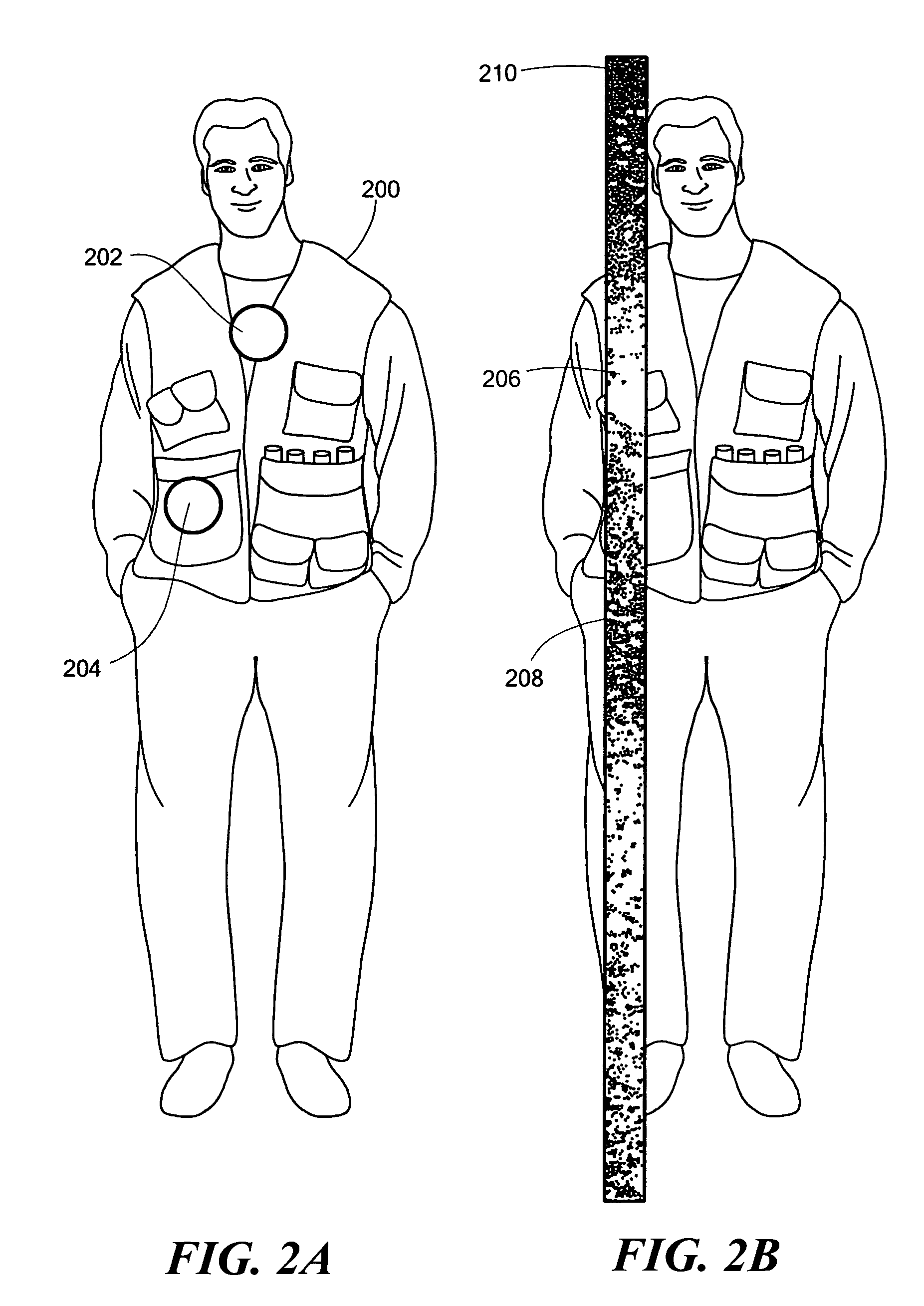X-ray inspection based on scatter detection
a scatter detection and x-ray technology, applied in the field of inspection systems, can solve the problems of inability to detect scatter, and inability to use detectors in applications requiring distances greater than five feet, so as to prevent damage to detectors and minimize bounce
- Summary
- Abstract
- Description
- Claims
- Application Information
AI Technical Summary
Benefits of technology
Problems solved by technology
Method used
Image
Examples
Embodiment Construction
Distant Detection of Backscatter
[0050]Embodiments of the present invention (which may be referred to as “Z-Radar”™) are now described with reference to FIG. 1. A backscatter inspection system, designated generally by numeral 100, use a collimated beam 102 of penetrating radiation, such as x-rays, to illuminate an object 104 (which, as indicated above, may include a person) at relatively large distances, to determine, for example, the metallic content on or within the object. An object will be said to be disposed at a “large distance” if the object of inspection, or a relevant portion thereof, subtends an angle of less than 5° in any direction as viewed from the source of illumination. Penetrating radiation may also include, for example, waves in other portions of the electromagnetic spectrum, such as gamma rays, but will be referred to, herein, as x-rays, without intended loss of generality. When the penetrating radiation is comprised of x-rays, the x-rays may be generated by an x-r...
PUM
| Property | Measurement | Unit |
|---|---|---|
| distances | aaaaa | aaaaa |
| average energy | aaaaa | aaaaa |
| angle | aaaaa | aaaaa |
Abstract
Description
Claims
Application Information
 Login to View More
Login to View More - R&D
- Intellectual Property
- Life Sciences
- Materials
- Tech Scout
- Unparalleled Data Quality
- Higher Quality Content
- 60% Fewer Hallucinations
Browse by: Latest US Patents, China's latest patents, Technical Efficacy Thesaurus, Application Domain, Technology Topic, Popular Technical Reports.
© 2025 PatSnap. All rights reserved.Legal|Privacy policy|Modern Slavery Act Transparency Statement|Sitemap|About US| Contact US: help@patsnap.com



